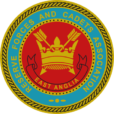Eighteen year old Bailey Naish, a Cadet Flight Sergeant with 42F (King’s Lynn) Squadron of the Royal Air Force Air Cadets has just become a Qualified Aerospace Instructor.
Bailey trained for 7 months on a range of subjects including air traffic control, aerodynamics, basic flight training, teaching and presentation skills. His training occurred during weekends near Salisbury Wiltshire, culminating in a week-long continual assessment at RAF Wittering near Stamford with forty other students from all regions of the Royal Air Force Air Cadets.
The final assessments encompassed the subjects and skills previously taught and included the delivery of a 40 minute group presentation on air power. Following on from this, the group visited the Rolls Royce engine factory in Derby and the East Midlands airport and their achievement was celebrated at a graduation dinner.

Cadet Flight Sergeant Naish said “It was a proud moment when we each received our certificate and blue lanyard, which when worn on the uniform is an outward recognition of the achievement. It was also a privilege to meet the Commandant Air Cadets Air Commodore Tony Keeling and have my photo taken with him.”
He continued “As a QAI, I can now deliver high-quality and interesting training in these various subjects on Squadron, in the Wing, and also the wider Air Cadet organisation.”
The qualifications and experiences available to young people like Bailey in the Air Cadets boosts life skills and aspirations to an extent that few other youth organisations can rival. The instructors who volunteer their time and dedication to train cadets also provide a great deal of support to follow through with embracing all that the Cadet Forces have to offer; it’s not uncommon for cadets to return to the Cadet Forces at some point as instructors to pay forward the gift of opportunity that was bestowed upon them.
East Anglia RFCA has delivered many building projects for the Air Cadets, so that the buildings they train in are fit-for-purpose and offer a welcoming environment for young people particularly in areas of high social deprivation. East Anglia does have pockets of high social deprivation especially in coastal areas, so the recent works for 221 (Great Yarmouth) Squadron and a cadet hut in Clacton-on-Sea are great examples of East Anglia RFCA contributing to improving opportunities for young people living in areas of socioeconomic deprivation.
Photos. MOD Copyright -May be reproduced.
Article submitted by 42F Media & Communications Officer Mike Lister. Tel. 01553 828570
E-mail m.lister249@btinternet.com

